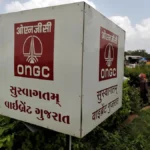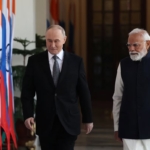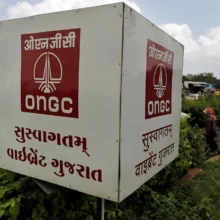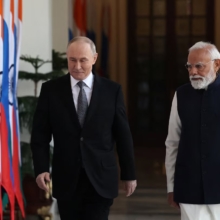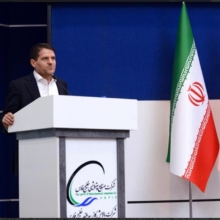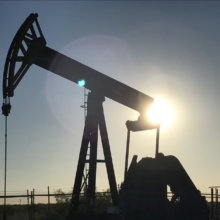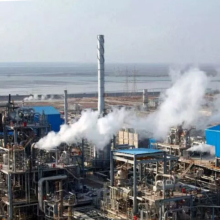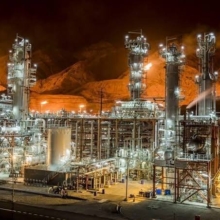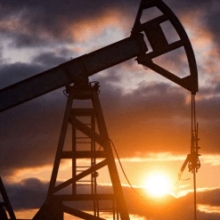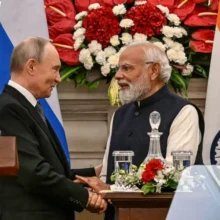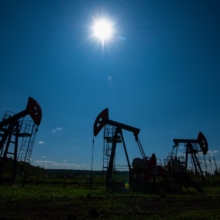Iran Polymer Output Capacity to Hit 17 mt/y
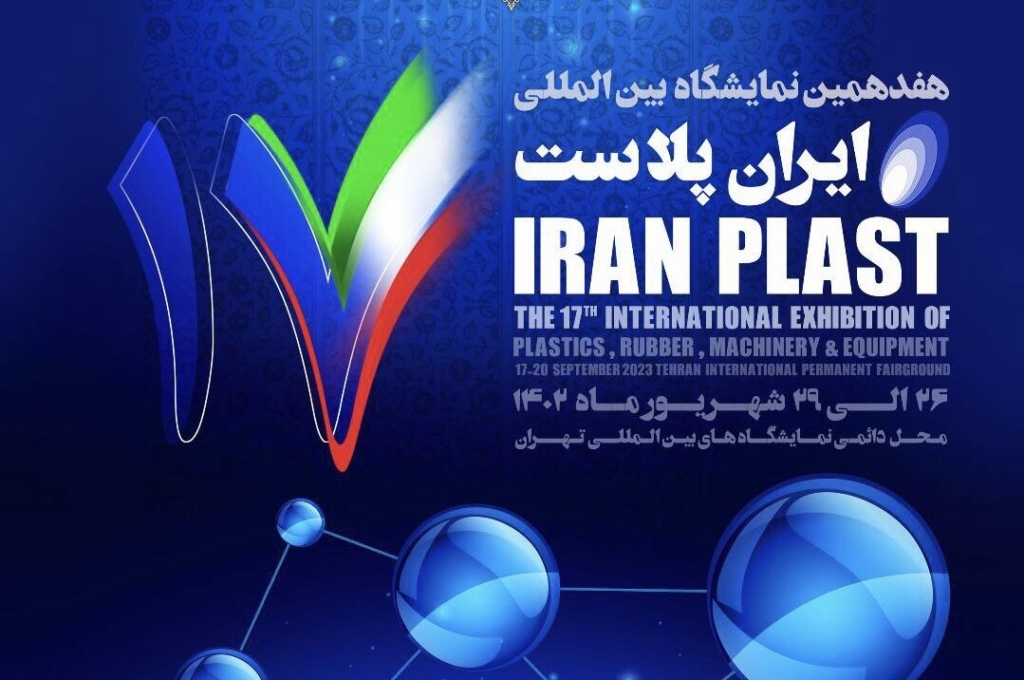
RoydadNaft – The following is a report published in Iran Petroleum’s latest issue on Iran’s petrochemical industry, specifically the polymer sector.
The 18 th edition of the “Iran Plast” international exhibition, in line with the policy of value chain completion in the petrochemical industry with the slogan of “global business”, was a big stride in favor of the development of Iran’s petrochemical industry specifically in the polymer sector.
Iran’s polymer production capacity currently stands at 8.7 million tonnes (mt) a year. In the light of growing demand for polymer products in local and foreign markets, implementing 24 new polymer projects would bring this capacity up to 16.7 mt by 2028.
Economic development and progress of hydrocarbon-rich Iran depend on the development of the petroleum industry. Meantime, value chain completion and investment in the petrochemical industry is the most reliable and most effective strategy in preventing crude sales to increase value-added and job creation for national development. Running 73 production plants and 3 utility plans, Iran’s petrochemical industry is receiving 1.1 mb/d of crude oil in feedstock to be converted to high-value products.
Iran’s nominal petrochemical production capacity currently stands at 96.5 mt a year, polymer products account for more than 8.5 mt of that. Polymers are highly valued due to their widespread use and the development of the polymer chain would earn Iran significant revenue.
Meantime, in addition to expanding downstream petrochemical industries that would bring about job creation and lower imports, polymer products would upgrade Iran’s share of global trading.
Iran 1 st Polymer
Polyvinyl chloride (PVC), was the first polymer produced in Iran at the Abadan Petrochemical Plant in 1970 at 36,000 tonnes a year. However, with the development of the petrochemical industry in recent years, currently 30 polymer plants are active in Iran, supplying such products as low-density polyethylene (LDPE), high-density polyethylene (HDPE), medium-density polyethylene (MDPE), polypropylene, linear low-density polyethylene (LLDPE), expanded polystyrene (EPS), general purpose polystyrene (GPPS), PVC suspension and PVC emulsion, PET (bottle and fiber-grade), polycarbonate, liquid and solid resin epoxy, synthetic rubber (PBR-SBR) and medical-grade PVC.
Today, polymers are largely used in a variety of industries including car manufacturing, food packaging, pharmaceuticals and chemicals, household appliance manufacturing, the construction industry, sports tools, medical equipment, foodstuff industry, and electronics among others. Owing to their unique features, polymers are likely to be used for more industrial purposes in the future.
813 companies
Given the growing demand for polymer products both internally and externally and in light of the diversity of polymer use in various industries, Iran has undertaken extensive plans to develop its polymer industry. The “Iran Plast” exhibition is in line with this objective, showcasing the plastic industry. Petrochemical players attend this annual event.
Iran held its first “Iran Plast” exhibition in 2002 when 223 local and 71 foreign companies from 18 nations were in attendance.
During the 18 th “Iran Plast” exhibition, held September 8-11, 228 foreign and 525 local companies came together at the Tehran International Permanent Fairgrounds. The event was held in various groups of petrochemical raw materials and products,technical and engineering services, premanufactured and manufactured products, machinery and equipment, scientific, research, and academic centers, HSE lab tests, IT and digital transformation, other master batch services, granule, and polymer compounds.
Event for Cooperation
The “Iran Plast” exhibition provides a suitable platform for companies to hold talks, and sign MOUs and agreements to broaden domestic and international cooperation and develop this industry.
In parallel with interacting with foreign companies for the fast realization of development objectives, as has been the case in the past, Iran’s petrochemical industry has never neglected self-sufficiency in the petrochemical industry. That explains why a large number of MOUs and agreements were signed on the sidelines of the “Iran Plast” exhibition. As more than 100 petrochemical projects are currently underway in the country, Iran’s petrochemical industry remains the largest scientific and research market in Iran. Universities, research centers, and local companies can offer great help to the development of this sector. Therefore, signing research cooperation documents were among the development plans that had been handled at the “Iran Plast” exhibition, the most important of which was 3 technological agreements and MOUs between Petrochemical Research and Technology Company (PRTC) and local companies.
PRTC signed an MOU with Euroslot Pars, a knowledge-based company, for developing technical know-how for propane dehydrogenization (PDH), an MOU with Afra Vandad Iranian on developing transmission lines for power and granule to polyolefin production units, and an MOU with Arman Pasargad Energy Technologies Development Company (APETDC) on developing necessary technical and technological knowhow for petrochemical refining and petrochemical industries.
Value Chain
On the sidelines of the 18 th “Iran Plast” exhibition, Special Economic Petrochemical Zone Organization (SEPZO) signed five agreements and MOUs for development of the petrochemical industry: agreement for methylamine production and downstream chain with a capacity of 36,000 tonnes a year on Site 2 of the Special Economic Petrochemical Zone with Petrosam Eurasia, agreement for silk, fabric, liner and jumbo bag manufacturing with capacity of 6,000 tonnes a year with $3 million plus IRR 2,500 billion investment on Site 1 of the Special Economic Petrochemical Zone with Ojaa Tabdri Alborz Co., and agreement for the development of pharmaceutical substance for lab solvent with capacity of 15,000 tonnes a year and $2.8 million plus IRR 760 billion investment on Site 1 of the Special Economic Petrochemical Zone with Jaber Aznagh Chemical Co.
Meantime, memorandums for the development of PVC2/VCM/E by the Arvand Petrochemical Plant with an annual capacity of 300,000 tonnes. In addition, a $626 million investment, VAM development by the Fanavaran Petrochemical Co. with an annual capacity of 100,000 tonnes, and an $87 million investment agreement were signed to increase nonoil exports, achieve self-sufficiency, and benefit from the private sector’s potential.
Attractive to Foreigners
In addition to 525 local companies, 244 foreign companies, and 44 agents of foreign companies from China, Italy, Taiwan, South Korea, Turkey, France, India, Germany, Spain, and Russia participated in the 18 th “Iran Plast” exhibition. Furthermore, 12 business delegations comprising 150 persons visited the “Iran Plast” exhibition from Russia, Serbia, Kazakhstan, Tajikistan, China, Pakistan, Uzbekistan, Afghanistan, Belarus, Syria, Iraq, and Oman to expand cooperation with Iranian companies.
Olga Antonina, Gazprom’s sales executive director, said on the sidelines of the “Iran Plast” exhibition: “We’re currently trying to begin our negotiations for signing agreements and establishing trade and industrial cooperation with Iranian petrochemical companies and be able to benefit from the existing potential in the petrochemical market of this country.”
“We held talks with several Iranian companies involved in the petrochemical industry, including Arya Sasol, Jam, and the Persian Gulf Petrochemical Industries Company. We hope that this trend would continue to result in positive cooperation for both parties,” said Antonina.
The CEO of a Chinese firm said Iran’s petrochemical market represented an attractive venue for international cooperation. “We’re in talks with several Iranian companies for long-term agreements,” he said.
Mohammad Ehsan Nematzadeh, the CEO of Behkaran Kahkashan Co. which is active in the plastic industry in Afghanistan, said his company receives raw materials and industrial machinery from Iranian companies.
“We’re about to sign agreements with some Iranian companies and we hope that Iranian and Afghan companies would be able to expand their activities in various fields, particularly petrochemical and polymer industry,” he said.
The head of Uzbekistan’s Maya Plast said the “Iran Plast” exhibition was a good opportunity for pushing ahead industrial objectives, particularly in the plastic industry.
“We’re seeking to cooperate with Iranian companies while expanding our activities not only in the plastic industry but also in all branches of the petrochemical industry,” he said.
7.5% Market Growth
Specialized workshops and panel discussions were among other strategic programs on the sidelines of the “Iran Plast” exhibition. These meetings and workshops were held on a variety of subjects including technological projects in the petrochemical sector, studying the Iranian catalyst industry market, the role of the petrochemical industry in sustainable development, studying challenges and opportunities in the export sector, reviewing future developments of the petrochemical industry and opportunities for investment in the capital market, artificial intelligence (AI) in the polymer industry, knowledge-based companies’ business development in the petrochemical industry value chain and the current status of biodegradable plastics in Iran and the world.
A training workshop on the “role of the petrochemical industry in sustainable development” was one of them. Highlighting the fact that economy, technology, and politics should be pushed towards sustainable development, the forum stressed that sustainable development requires parallel and simultaneous focus on society, economy, and the environment.
The petrochemical industry market in the world was valued at $617 billion in 2023, which is projected to reach $1.162 trillion in 2032. This workshop emphasized the development of an environmentally friendly value chain, management of resources and costs, reducing energy intensity, waste management, green industry development, and compliance with international environmental regulations for sustainable development in the petrochemical industry.
AI Document
The AI document in the petrochemical industry was unveiled on the final day of the “Iran Plast” exhibition. This document has been drawn up based on comprehensive studies conducted on how to apply AI to the petrochemical industry. For that purpose, about 80 sources have been studied since 2021.
AI is used in various sectors of the petrochemical industry, including optimization of processes, optimization of energy consumption, HSE, and optimization of transportation. AI applications have been identified in 14 categories in the petrochemical industry. More than 30 projects are envisaged in the first edition of the document.
24 Polymer Projects
Iran’s petrochemical industry has a cohesive plan for completing the value chain for high-valued products while increasing the volume of production, particularly in the polymer sector. Last calendar year, more than 1.3 mt of varieties of polymer had been purchased locally. That would create high value-added for the country.
Currently, 24 polymer projects are underway in the country, whose completion would bring the production capacity of these products to 16.7 mt by 2028. Of course, planning is underway for building polymer units. A stunning jump is largely expected in polymer production in the coming years.
The world is increasingly focused on developing biodegradable polymers and recycling technologies with a view to allaying environmental concerns about plastic waste. Innovation in the chemistry of polymers and engineering would result in better performance. The polymer industry is instrumental in modern technology and manufacturing, and it can affect various aspects of everyday life as well as industrial processes.
Furthermore, manufacturers are expanding their access to new markets and optimizing production and distribution processes in a bid to respond to growing demand on a global scale. To that end, given the applicable regulatory rules about the environmental and health impacts, actors of this industry are expected to comply with tough regulations regarding the production, use, and disposal of polymers and minimize environmental damage.

